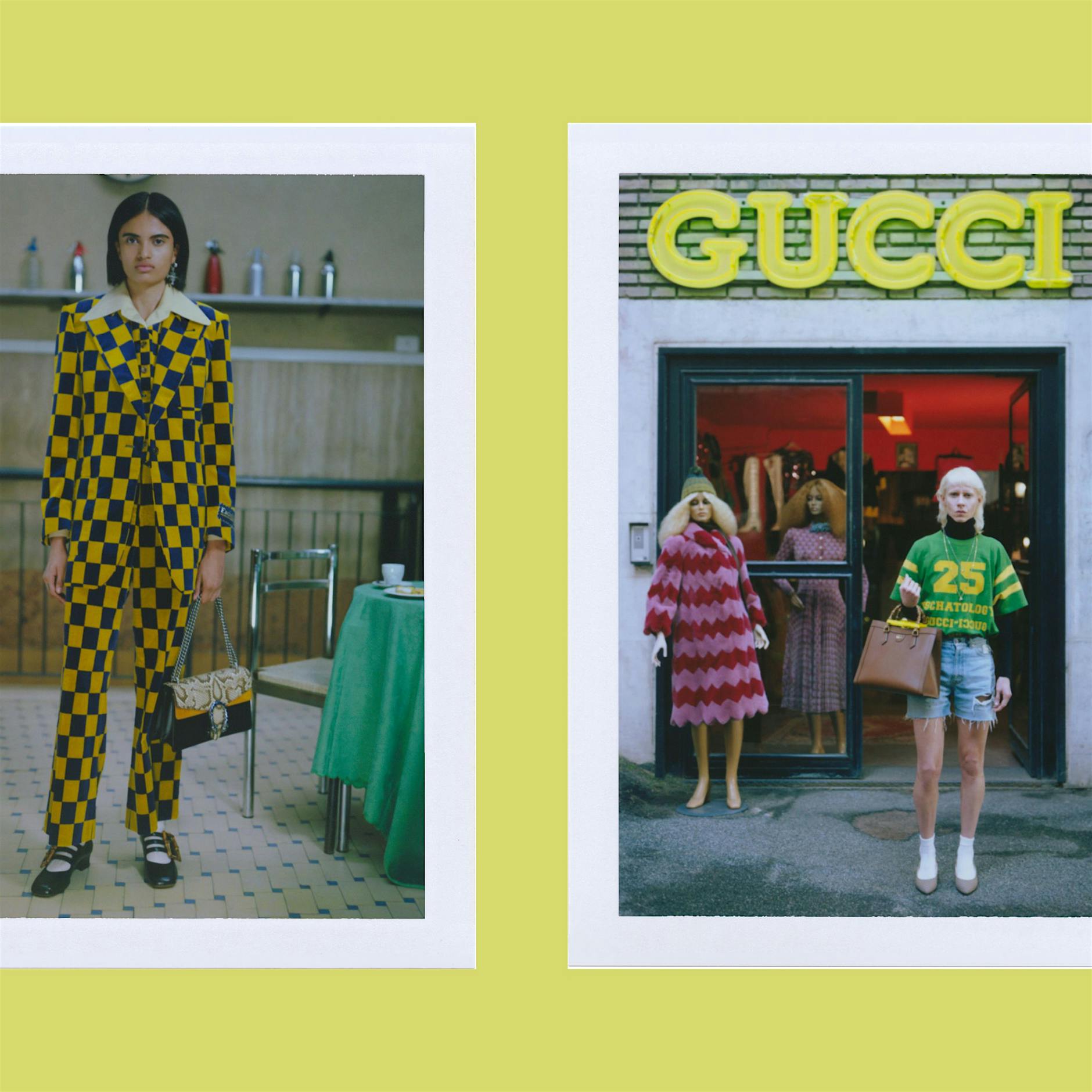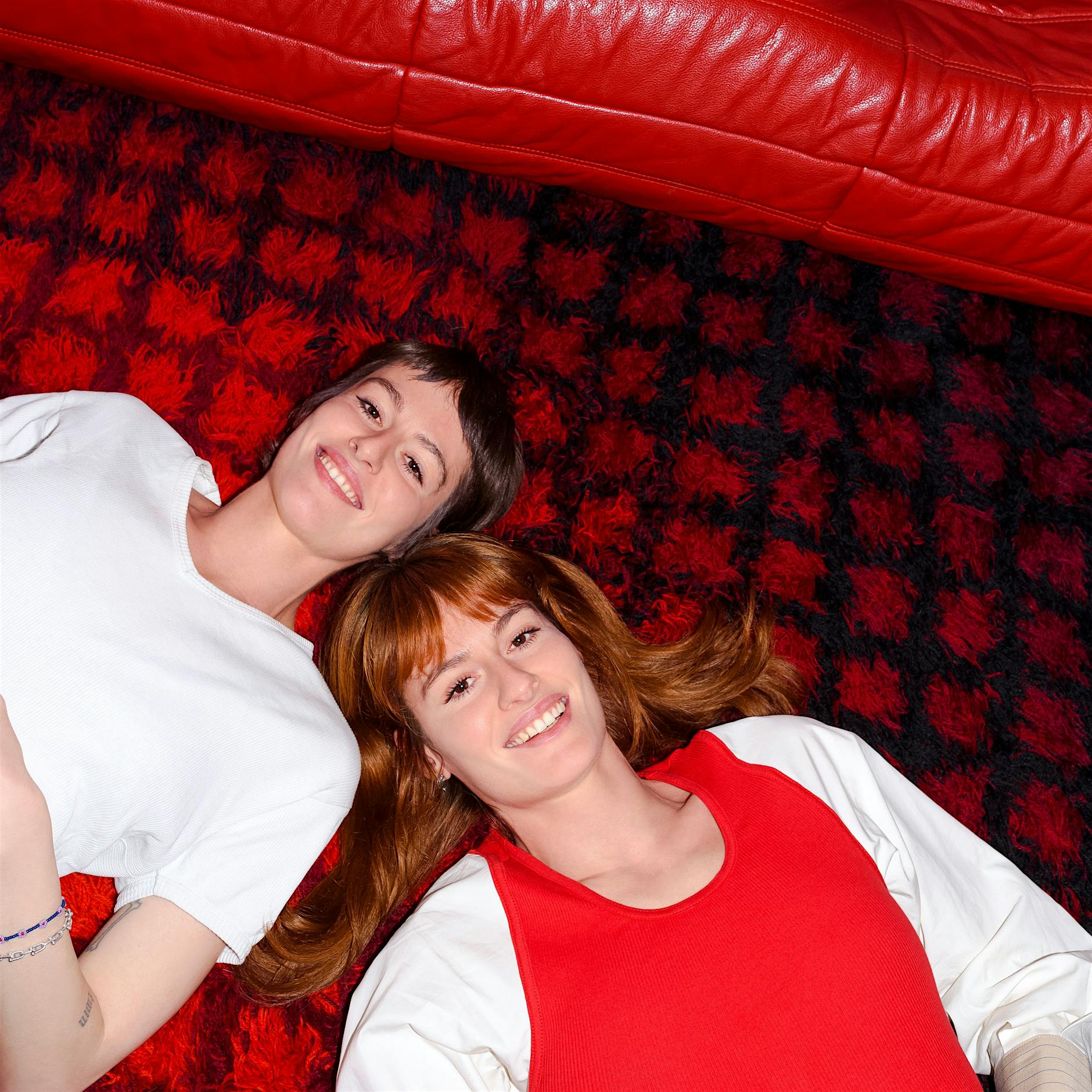Milan-The 1970s and 1980s saw trailblazer Elio Fiorucci merging art, fashion, and social relationships; after all, Andy Warhol was among his friends at the time. In 1983 Keith Haring sprayed the wall of his iconic store in Piazza San Babila in Milan with graffiti, making it feel like a gallery. It felt creative, exciting, and genuine.
From the mid 1980s, brands started developing their own art collections, foundations, and patronages. Art became another trend in business. In Paris, we see Fondation Cartier (founded 1984), Fondation Pierre Bergé et Yves Saint Laurent (2004) and Fondation Louis Vuitton (2014). In Italy, the Fondazione Nicola Trussardi was founded in 1996 - despite not having a permanent physical venue, it is still active today with exhibitions in Milan and across the world. In 2006 François Pinault restored the Palazzo Grassi and Punta della Dogana in Venice and reopened them as a museum. Today, fashion is supporting artistic heritage, including ancient monuments, together with public institutions. For example, Tod’s invested 25 million euros in the restoration of Rome's Colosseum, which was completed in 2016. This is just a snapshot of the countless art initiatives and collaborations that exist today.
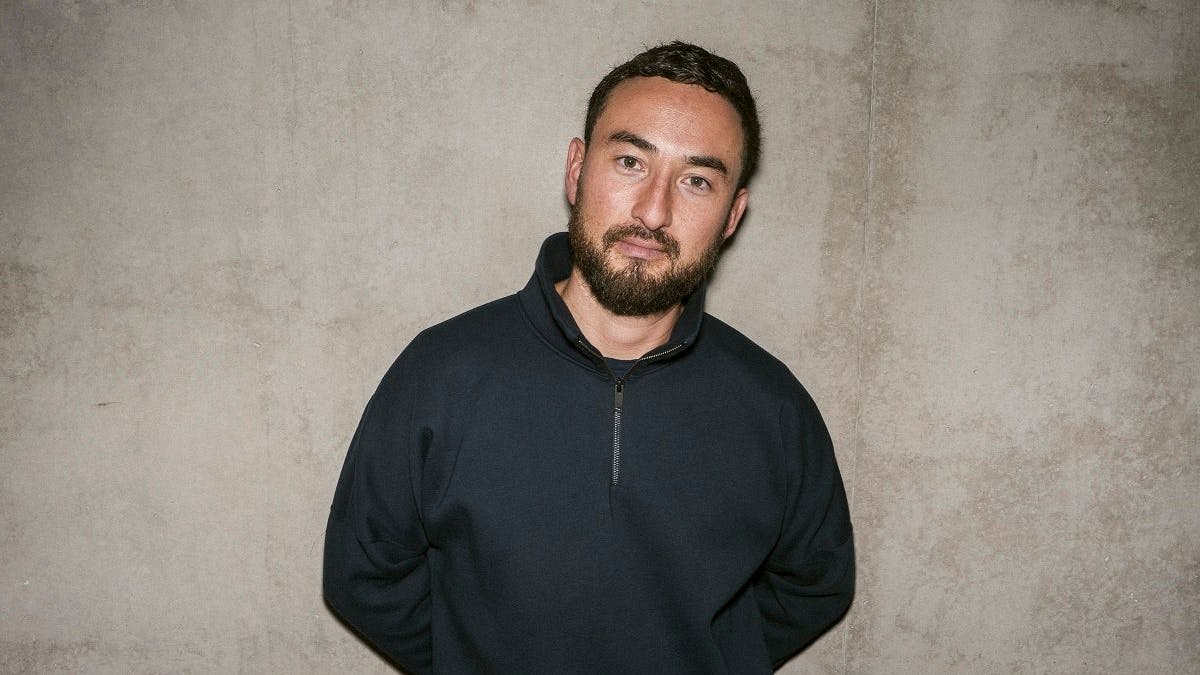
Miro Kuzmanovic
There's no denying that this strategy offers brands a chance to boost their popularity and enjoy the economic benefits. At the same time, they have the means and potential to bring art back to life. One of the strongest believers in the connection between art and fashion is Miuccia Prada, a pure intellectual who has turned her vision and ideology into collections. Art is part of her mindset, and in 1993 she established Prada Milano Arte (soon to become Fondazione Prada), with art historian Germano Celant as artistic director. They worked together until he died of Covid-19 in April 2020.
Miuccia Prada and her love for the arts
Back then, the venue was just a 1000 sq metre space on Via Spartaco in the south of Milan. It hosted groundbreaking exhibitions like the last of the American minimalist Dan Flavin's shows during his lifetime, which included an amazing permanent neon installation in the Chiesa Rossa church at 24 Via Neera. "Milan is our home and since the opening of this location in 2015, it has become even more so," explains Chiara Costa, who works side by side with Miuccia Prada as Fondazione Prada's Head of Programs, during a visit in May.
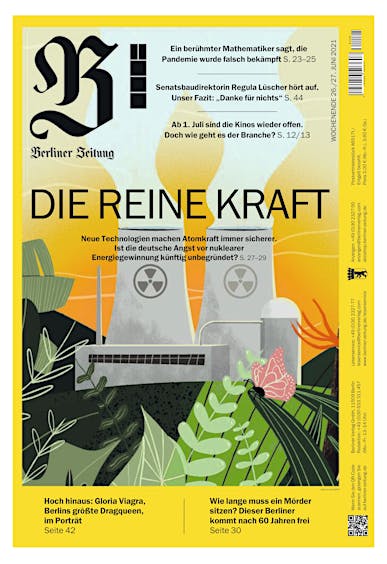
Am 26./27. Juni 2021 im Blatt:
Die reine Kraft: Neue Technologien machen Atomkraft immer sicherer. Ist die deutsche Angst vor nuklearer Energiegewinnung künftig unbegründet?
Der berühmte Mathematiker Matthias Kreck sagt, die Pandemie wurde falsch bekämpft. Doch man will nicht auf ihn hören
Am 1. Juli öffnen wieder die Berliner Kinos. Wie es der Branche geht
Senatsbaudirektorin Regula Lüscher hört auf. Unser Fazit: „Danke für nichts“
Gibt es in Schlesien tatsächlich verbuddeltes Nazigold? Unsere Reporter sind hingefahren
https://berliner-zeitung.de/wochenendausgabe
"This architectural clash in its outskirts provoked a big change in the city, and in the Fondazione itself. The previous location was smaller and we used it in between big fashion events. Now fashion and the Fondazione operate separately from each other, but Signora Miuccia is the mastermind behind everything. Taxi drivers are a good indicator for trends in the city; before, none of them knew the address or even that the institution existed. Now, just by hearing Fondazione, they know exactly where to go. The audience is very diverse and each exhibition attracts different kinds of visitors". Over her 10 years at the Fondazione, Costa has watched the transformation of the surrounding area as has happened in big cities all over the world, and for which East London or Berlin Mitte are typical examples.
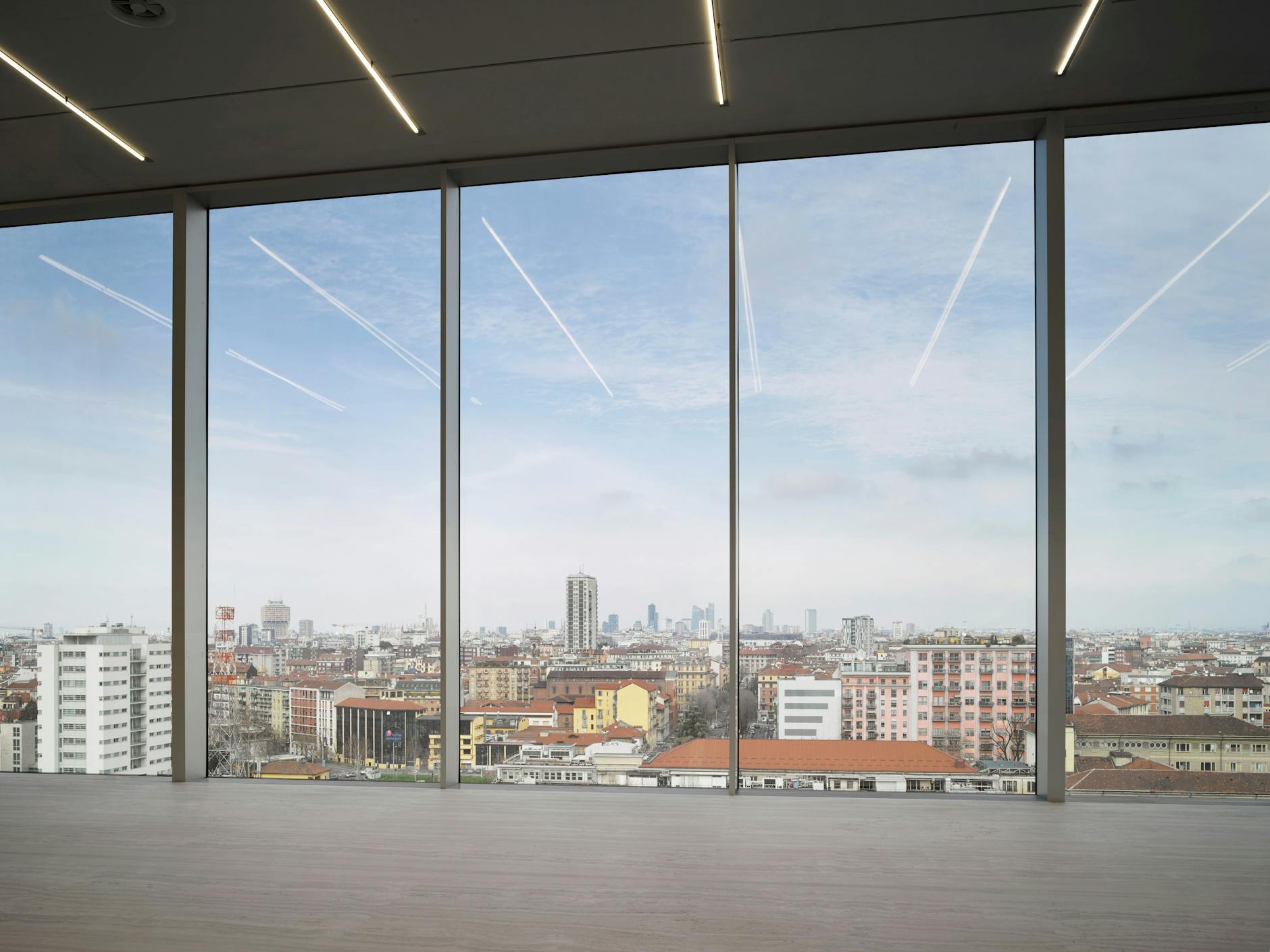
Courtesy Fondazione Prada/Bas Princen
The Fondazione's 10-building complex is a mix of different architectural styles, orchestrated by the Dutch star architect Rem Koolhaas and his studio OMA/AMO. This is no impromptu collaboration: Koolhaas first worked with Miuccia Prada in 2001 on the "SoHo Epicenter" Prada store in New York. Their 20-year-long collaboration has spanned fashion as well as architectural projects: the pair have worked together on concepts for the brand's runway shows, stores and exhibitions, with provocative results. In the recent film presentation of the Prada menswear collection for Spring/Summer 2022, models process through a long, red tunnel. The set was built by AMO and filmed at Fondazione Prada.
A building that's a work of art too
The complex is not the only space that makes up the institution. Since 2016 it also consists of the Osservatorio, a dedicated space for photography and visual art in Milan's Galleria Vittorio Emanuele, as well as Venice's Ca' Corner della Regina palace since 2011. There is also Rong Zhai in Shanghai: a beautiful villa that the brand uses as a flexible space dedicated to various cultural activities. Since 2018 the Fondazione has typically planned two exhibitions a year there.

The Milan compound covers 18,900 sq metres, with a vast public area of 1,300 sq m that can be enterred for free, and the exhibition spaces taking up 11,000 sq m. Buying the tickets is an experience (unless you buy them online): "First you need to find the counter, which is a challenge. The repertoire of the buildings and the architecture, as Koolhaas calls it, is there for people to use," Costa says. "The space isn't meant to be functional like in a conventional museum, instead you should become the curator of your own visit." Very conceptual, yet very stimulating too.
Wallpaper - made of 200,000 pieces of real gold foil
The venue is the result of the transformation of Società Italiana Spiriti, a distillery dating back to the 1910s. Its articulated architectural configuration combines seven existing structures and three new builds: Podium, the 205-seat Cinema, and the nine-story, 60-metre-high Torre, which opened in 2018 to house a permanent collection and restaurant. But the most Instagram-friendly part of the complex is the Haunted House which, untouched in its structure, is covered in 200,000 sheets of gold foil. The extra thin sheets weigh a total of just 1.4 kg, costing around 70,000 euros based on current gold average prices. They were provided by Italian manufacturer Giusto Manetti Battiloro, a Firenze company going back 15 generations which has been active in gold beating for 400 years.

In 2015, Koolhaas perfectly explained the meaning of this building to the Italian newspaper Corriere della Sera: "It is a way to let people understand the value of this not so central and less well-known area. It allows extremes to coexist peacefully. So, as gold is the symbol of wealth, it was the perfect medium to add value to what was there before, to transform the ordinary into the extraordinary". The Torre's white cement was much more expensive, due to its complicated manufacturing process. The Podium's 100% recycled, lightweight and highly resistant aluminium foam was also difficult to transport from its Canada-based manufacturer, the only one in the world.
Before construction on the site started, the area was almost abandoned - but the build kick-started its gentrification. "We have the privilege to see in real-time what this word means," Costa explains. "Milan is expanding towards the north, where the big factories were in the past; the south was closer to the countryside. As the crow flies we are very close to the city centre, but still not far from the outskirts." These benefits are attracting new people to the area, who are opening offices and shops und buying apartments. The negative impact of gentrification is not tangible yet. For now, the area is still in the most thrilling phase of this process: its upswing with a young, creative scene.
A Berlin artist opens the post-corona season
"I remember that in 2014 it was not safe to leave the Fondazione at night," Costa says. The area's most familiar feature was probably the appearance of Lady Maria, a prostitute. “She used to walk out at the front - the surroundings were deserted. Now I see a lot of bars and other construction sites flourishing - the area is becoming safer and livelier". Bar Luce, located inside the Fondazione complex and designed by American director Wes Anderson, sparked this evolution with its flamboyant interiors and a menu in the Milanese café tradition.


Fondazione Prada/Marco Cappelletti
Surprisingly, in the era of "gadgetisation" of fashion, the institution doesn't sell any merchandise. Their sweaters or tees could become some of the coolest must-haves. "So far that's not in Signora Prada's thoughts, that's obvious. Maybe it could come out of some wider project, something about trade, for example, but not a basic gadget," Costa says. The paths of the fashion brand and the art institution have always crossed, but never overlapped: the project for the 2019 Milan Furniture Fair (Salone del Mobile) where architects Cini Boeri, Elizabeth Diller and Kazuyo Sejima were invited to design wearable bags is worth mentioning, even though it wasn't commissioned by the Fondazione.
Berlin-based British artist Simon Fujiwara kicked off the post-pandemic season with his solo show "Who the Bær" (running until September 27th), a playful take on today's hot topics. "In these times where everything is very extreme, I was trying to be a bit lighter with 2D drawing and collages, all seen through the eyes of the bear, a childish figure in search of identity, but also a symbol of the capitalistic world when turned into a soft toy to be sold," the artist explained at the exhibition's opening. He has impressed critics with a brave and disruptive perspective on heavy issues. Tickets to the exhibition are available on the door at the museum or online.
Venice's Palazzo Ca' Corner has followed the reopening in Milan with the exhibition "Stop Painting" by Peter Fischli (until November 21st). On September 16th "Sturm&Drang" will open at Osservatorio. For next year's Venice Biennale, Prada plans to surprise again. "We'll present the continuation of our work on themes in neuroscience, which we started during the pandemic, including conversations with scientists about this incredible and fragile "device" which is our brain and all its evolutions and connections. This was Miuccia Prada's concept: to take part in an art biennial without a single work of art," Costa explains. So stay tuned to see what's next.


